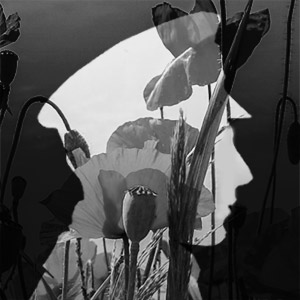
John Akeroyd was born in Wakefield on the 30th August 1893, the eldest of five children born to Walter Oxley Akeroyd and his wife Alice (nee Firth) who married in 1893. John was baptised at Wakefield St Michael’s Church on the 14 September 1893. In 1901 the family was living in the North Westgate district of Wakefield and by 1911 Walter and Alice, together with three of their four sons had moved to Barugh Green, Barnsley. John Akeroyd, younger brother, Joseph, and their father Walter were all working as coal miners. The youngest boy was at school. Walter and Alice had five children, but one had died before April 1911.
John W. Akeroyd married Florrie Littlewood in the Leeds Registration District in 1913. The Akeroyds, presumably moved to live in Ossett circa 1913 and a son, Walter Akeroyd was born to the couple in 1914 in the Dewsbury Registration District.
The 1st/4th Battalion of KOYLI was formed in August 1914 at Wakefield and was part of the 3rd West Riding Brigade, West Riding Division. They moved on mobilisation to Doncaster and then in November 1914 to Gainsborough. The battalion moved again to York in February 1915 for training and on the 12th April 1915, they landed at Boulogne. On the 15th May 1915 the formation became 148th Brigade, 49th (West Riding) Division.
In the early hours of the 1st July 1916, Private John Akeroyd, with the 1st/4th Battalion KOYLI, as part of 148th Infantry Brigade, moved up to assembly trenches in Aveluy Wood with the objective of assisting the 32nd Division in taking Thiepval village with 36th Division. They had arrived in their trenches in the Eastern part of the wood at 3 a.m. but were not expected to attack until later in the day and consequently they could hear and witness the battle which started at 7.30 a.m.
By 1.30 p.m. on July 1st, a renewed attack was made on the Northern edge of Thiepval, but it did not achieve its aims and X Corps planned a renewed attack at 4 p.m. but orders for this were not received until 3.35 p.m. by those battalions of the West Yorkshire Regiment that were to be involved and so they set off ill-prepared. Orders to cancel the attack failed to arrive and the advance dissolved as the men fell after a few dozen yards.
British aerial reconnaissance claimed British helmets had been seen moving in Thiepval and believing that to be the case another attack was planned from the cemetery in the North of the village. The orders reached 1st/5th Battalion KOYLI at Aveluy Wood at 6 p.m. on July 1st. Along with the 1st/4th KOYLI, the 1st/5th KOYLI immediately went forward with the intention of crossing the River Ancre by the Black Horse Bridge to the south of Authuille. Just after they set off, orders were received cancelling the previous orders, and they returned to Aveluy Wood, but not before taking several casualties from from German shell-fire in the process. It is likely that John Akeroyd was killed in action at this time.
Private Akeroyd’s army service record has not survived, but he was awarded the British and Victory medals but not the 1914-15 Star indicating that he did not serve overseas until after the 31st December 1915
The “Ossett Observer” 1 had this report about Private John Akeroyd being missing:
“No further information has been received of Private John Akeroyd of the K.O.Y.L.I., whose wife and family reside at Manor-road, Ossett or Private Harry Hemingway, whose parents reside in Crown-street, South Ossett, both of whom have been missing for some months.”

Above: Map of the opposing armies on the first day of the Battle of the Somme. 1/4 KOYLI are with 49 Division, west of Thiepval village
Private John Akeroyd was killed in action on the opening day of the Battle of the Somme on the 1st July 1916, his body was never recovered and he is remembered on Pier and Face 11 C and 12 A at the Thiepval Memorial, 1 Somme, France. The Thiepval Memorial will be found on the D73, next to the village of Thiepval, off the main Bapaume to Albert road (D929).
On the 1st July 1916, supported by a French attack to the south, thirteen divisions of Commonwealth forces launched an offensive on a line from north of Gommecourt to Maricourt. Despite a preliminary bombardment lasting seven days, the German defences were barely touched and the attack met unexpectedly fierce resistance. Losses were catastrophic and with only minimal advances on the southern flank, the initial attack was a failure. In the following weeks, huge resources of manpower and equipment were deployed in an attempt to exploit the modest successes of the first day. However, the German Army resisted tenaciously and repeated attacks and counter attacks meant a major battle for every village, copse and farmhouse gained. At the end of September, Thiepval was finally captured. The village had been an original objective of the 1st July. Attacks north and east continued throughout October and into November in increasingly difficult weather conditions. The Battle of the Somme finally ended on the 18th November with the onset of winter.
In the spring of 1917, the German forces fell back to their newly prepared defences, the Hindenburg Line, and there were no further significant engagements in the Somme sector until the Germans mounted their major offensive in March 1918.
The Thiepval Memorial, the Memorial to the Missing of the Somme, bears the names of more than 72,000 officers and men of the United Kingdom and South African forces who died in the Somme sector before 20th March 1918 and have no known grave. Over 90% of those commemorated died between July and November 1916. The memorial also serves as an Anglo-French Battle Memorial in recognition of the joint nature of the 1916 offensive and a small cemetery containing equal numbers of Commonwealth and French graves lies at the foot of the memorial.
References: